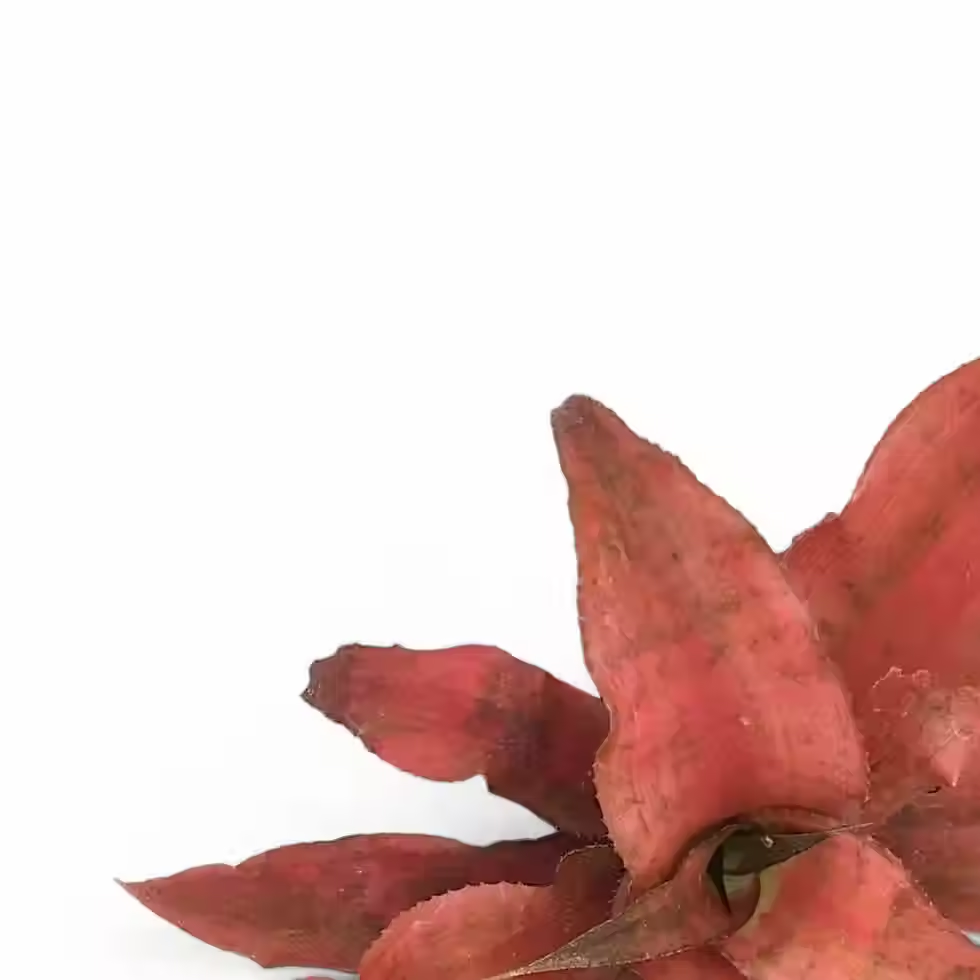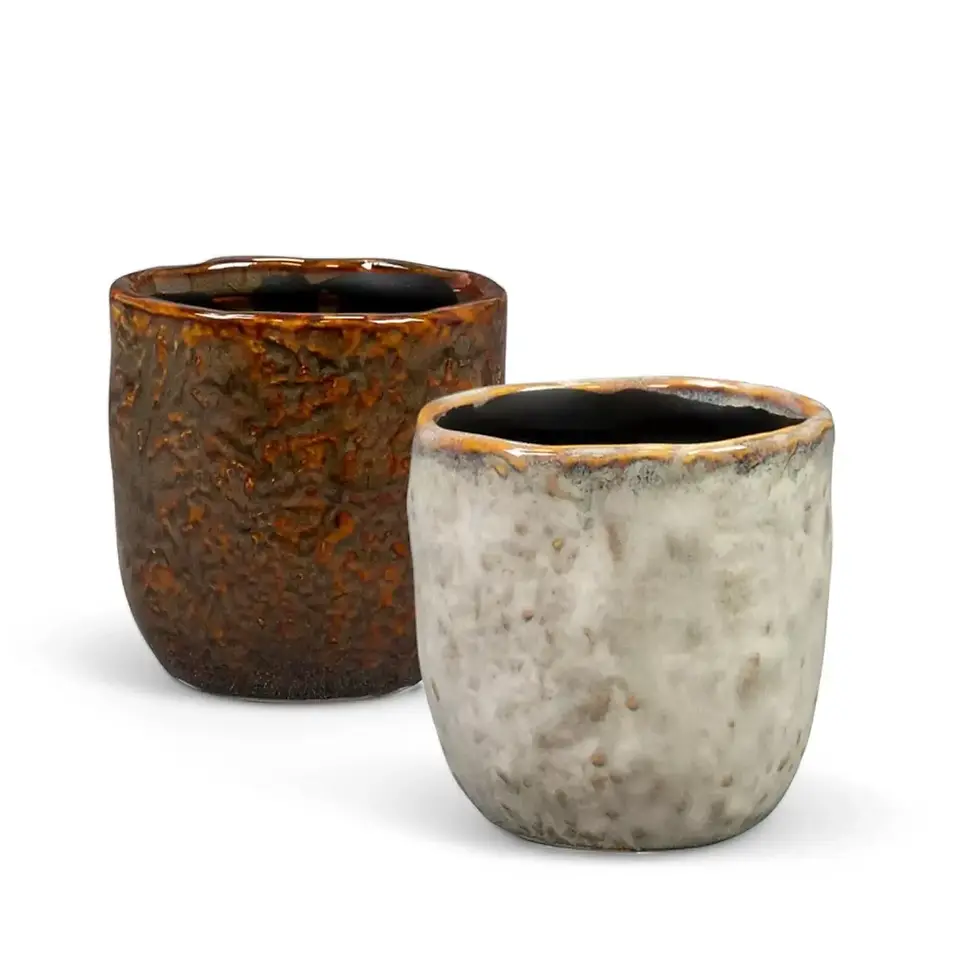Aeschynanthus 'Rasta' - Unique Curled Foliage and Easy Care
Aeschynanthus 'Rasta' stands out with its striking, twisted, deep-green leaves that cascade elegantly from hanging baskets. The dramatic curling of its foliage gives it a sculptural, almost surreal appearance, making it a captivating choice for any indoor plant collection. As it matures, this plant forms dense, trailing vines, occasionally bursting into vibrant, tubular red flowers that contrast beautifully against the rich green leaves. Its unusual foliage and effortless beauty make it an eye-catching houseplant that thrives in various indoor environments.
Distinctive Features and Advantages of Aeschynanthus 'Rasta'
- Fascinating Twisted Leaves: Tightly curled foliage creates a dynamic, textured look.
- Trailing Growth Habit: Ideal for hanging planters or elevated shelves where its vines can cascade beautifully.
- Low-Maintenance Bloomer: Produces striking red tubular flowers under the right conditions.
- Compact and Lush: Grows densely, filling spaces with rich greenery without requiring excessive maintenance.
How Does Aeschynanthus 'Rasta' Differ from Aeschynanthus 'Twister'?
While both share curly leaves, 'Rasta' has tighter and more defined twists, giving it a structured look, whereas 'Twister' has looser, flowing curls. 'Rasta' also grows more compactly, making it a standout architectural plant.
Key Insights About This Plant
Aeschynanthus 'Rasta' is a cultivated hybrid bred for its unique foliage and adaptability. Unlike wild Aeschynanthus species from Southeast Asia, 'Rasta' has no natural habitat but inherits traits from its parent plants. Indoors, it remains a compact trailing plant, reaching lengths of 60-90 cm. It is non-toxic to pets and humans, making it a safe choice for households with animals.
Caring for Aeschynanthus 'Rasta'
- Placement: Best suited for elevated spots such as hanging baskets or shelves.
- Light: Prefers bright, indirect light. Too little light may reduce flowering; too much direct sun can scorch the leaves.
- Water: Allow the top 2-3 cm of soil to dry between waterings. Avoid overwatering.
- Humidity: Thrives in higher humidity; group it with other plants to maintain moisture levels.
- Temperature: Ideal range is 18-26°C. Protect from drafts and sudden temperature changes.
- Soil: Well-draining mix with coconut coir, orchid bark, and perlite.
- Repotting and Pot Choice: Repot every 2-3 years or when roots outgrow the pot. Use a hanging pot with drainage holes.
- Fertilizing: Feed monthly with a balanced liquid fertilizer during the growing season.
- Propagation: Easily propagated via stem cuttings in water or soil.
- Semi- and Hydroponics: Can adapt to semi-hydroponic setups using inert substrates with proper moisture control.
- Pruning: Trim dead or leggy vines to maintain a bushy shape and encourage new growth.
- Growth Rate: Moderate, with steady development under consistent care.
Potential Issues with Aeschynanthus 'Rasta' and Solutions:
- Yellowing Leaves: Often caused by overwatering or poor drainage.
- Browning Leaf Tips: Low humidity—consider increasing moisture levels.
- Drooping Leaves: Usually a sign of underwatering—adjust watering routine.
- Pests: Watch for mealybugs, aphids, spider mites, and thrips; treat with neem oil, or use beneficial insects or insecticidal soap.
- Root Rot: Ensure proper drainage and avoid compacted soil.
- Fungal Issues: Improve air circulation to prevent mold or mildew.
Additional Notes
Aeschynanthus 'Rasta' does not require a strict dormancy period to bloom. Providing consistent moisture and bright light encourages healthy foliage and flowering. Understanding the growth patterns of its parent species can help you refine its care.
Etymology
The genus Aeschynanthus comes from the Greek words aischyne (shame) and anthos (flower), likely referring to the deep red blooms. The cultivar name 'Rasta' is inspired by its uniquely curled foliage, resembling Rastafarian dreadlocks.
Frequently Asked Questions
→ Why isn’t my Aeschynanthus 'Rasta' flowering?
Insufficient light is the most common cause. Move it to a brighter location with indirect sunlight.
→ How do I make my plant bushier?
Regular pruning and occasional pinching back of stems encourage fuller, more compact growth.
Bring Home Aeschynanthus 'Rasta' Today!
With its mesmerizing curled foliage and trailing elegance, this plant adds a dynamic touch to any space. Order now and enjoy its unique beauty in your home!
Aeschynanthus 'Rasta'
Aeschynanthus 'Rasta' is approximately 30 cm long/ tall and comes in a ⌀ 15 cm pot.

























































